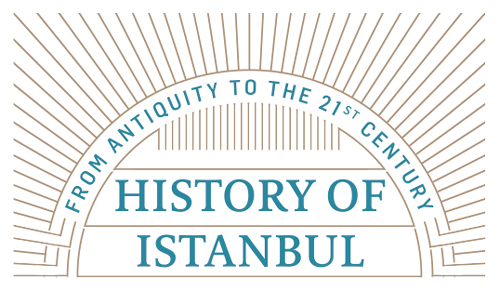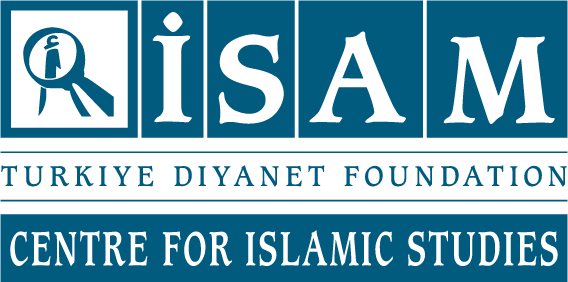Pre-Christianity Period
The city, which according to a narration, was founded in the seventh century BC and named as Byzantium after the name of its founder Byzas, attracted the attention of various states throughout history and was annexed by the Roman Empire in 73 CE. After the emperor Constantine I ascended the power in the Roman Empire (323 CE), he selected Byzantium as the capital of his empire under the name of “Constantinople” or “Nova Roma.” He started to construct his capital in 324 and the official opening ceremony of the city was carried out on May 11, 330.1
In the pre-Christianity period, paganism was dominant in the city and there was a very colorful religious life based on Greek religious culture as well as religious understandings adopted from Egypt, the Aegean region, and Thrace.
Christianization of Istanbul
According to the view supported by the Greek Orthodox Church, the claim is that Christianity came to Byzantium with the first generations of the disciples of Jesus. Apostle Andreas added ancient Byzantium to his missionary area in 37 CE and became the first patriarch of the city. However, this information is not mentioned in any of the early sources of the Church and neither is it verified by scientific methods. This claim that goes back to seventh century is thought to be the result of a debate between Rome and Constantinople (Istanbul) caused by the usage of the title “Ecumenical Patriarch” by the Patriarch of Istanbul.2 The basis of the debate was as follows: In order to express its supremacy, Rome used to base its foundation on the Apostle, Saint Peter. Istanbul, on the other hand, claimed Saint Andreas, who had adhered to Jesus’ mission earlier than Peter, to be the founder of its church in order to express its supremacy.
Our knowledge about the existence of Christianity in pre-Constantine Byzantium is very weak and the earliest direct data in this regard goes back to the end of second century CE. In the hierarchy of the Church, Byzantium was a patriarchate under the authority of Heraclea (Irakleia or Cyclades) before the Ecumenical Council of Nicaea (325). In parallel to the establishment of Constantinople as capital city the patriarchate gained importance and the number of the Christian population of the city went up. Constantine raised the city’s status to a patriarchate and turned it into the center of Christianity.
After Christianity became the official religion of the entire empire in 380, the city was accepted by the third canon adopted by the Second Ecumenical Council (First Council of Istanbul) who had gathered in this new capital, “The Bishop of Constantinople shall have the primacy of honor after the Bishop of Rome, because it is New Rome. However, this canon attracted reaction in Rome and Alexandria”.3 The ascendance of a bishop of Constantinople to the second in hierarchy in the Second Ecumenical Council caused strong opposition of the Church of Alexandria. Nevertheless, the Council of Chalcedon in 451 adopted the canon and established Constantinople as a patriarchate with jurisdiction over Asia Minor and Thrace. In this way, it confirmed and attested to the notion that the bishops of Rome and New Rome were equal, but that the highest honor belonged to Pope (The Council of Chalcedon, canon 28). Neither did the legates of papacy attend this Council nor did Pope Leo I (440-61) accept to admit to this canon. The equal status of the new capital fueled up the debate between Istanbul and Rome even more.4
After Constantinople became the capital city, it hosted several Councils. In addition to the local councils, the second ecumenical council in 381, the fourth ecumenical council in Chalcedon in 451, the fifth ecumenical council in 553, and the sixth ecumenical council in 680 were all gathered in Istanbul.
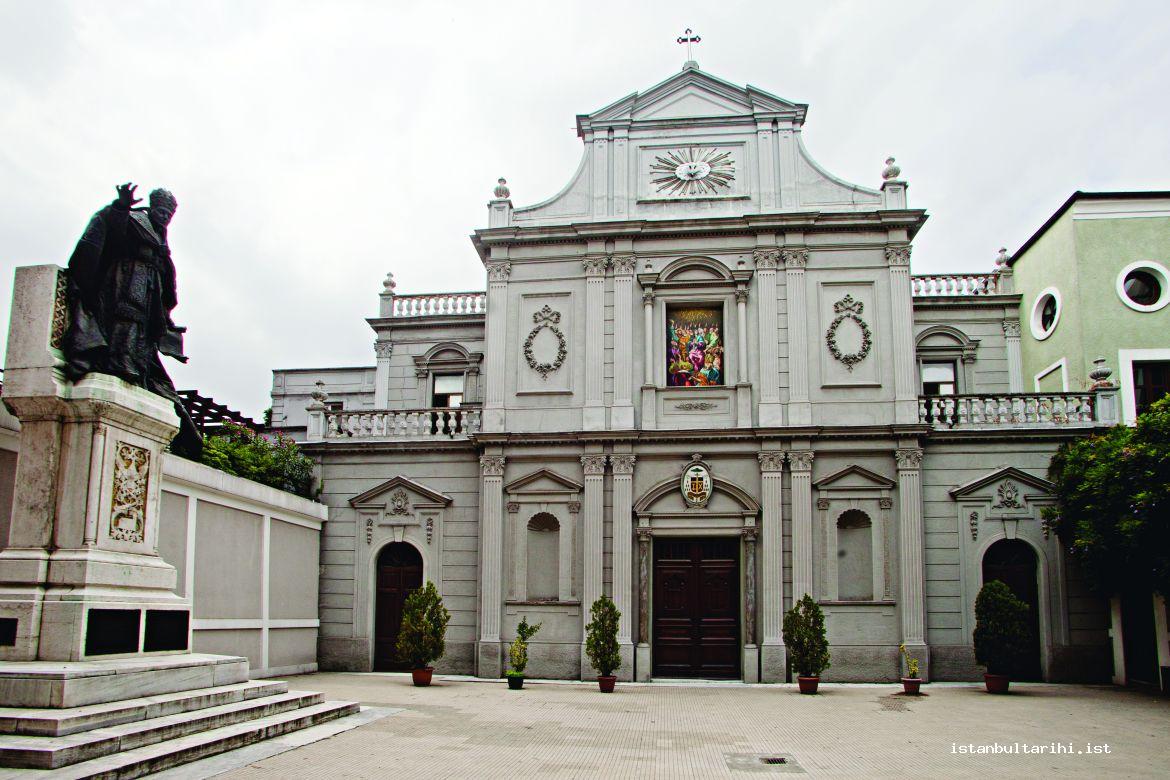
At the beginning of the sixth century after the Acacian schism, the official title of the patriarch of Constantinople became “the Archbishop of Constantinople, New Rome and Ecumenical Patriarch” and the title “Ecumenical Patriarch” which was adopted by Rome was later strongly criticized by Pope Gregory I.5
Constantinople was the capital of the world of Byzantium. As being the center that defined and spread Orthodoxy, it became the scene for various religious debates and the tension experienced with the Roman Church. In addition to Orthodox Christianity, in Constantinople there were groups labeled as heretical because of their opposition to the mainstream religious doctrines accepted by the general population. Arianism was prominent one among these groups.
After the end of fourth century, there was a growing alienation between Byzantium dominated by Greek culture and western world dominated by Latin culture. The first showdown and excommunication between Constantinople and Rome took place at the end of the fifth century as Acacian schism. A similar situation happened in the ninth century. On the other hand, there were differences between two churches in religious matters (such as the issue of filioque and the nature of bread in the sacrament of Eucharist).
When the occasional uncompromising approaches of the popes and patriarchs were added to differing religious understandings, cultural values, and changing imperial policies, the eventual separation between Constantinople and Rome in 1054 became inevitable. With the parchment left by the legate of Pope on the altar of Hagia Sophia on July 16, 1054, the Patriarch and his followers were excommunicated. In return, Constantinople excommunicated Rome. The Western Church, the center of which was Rome, identified itself as Catholic (universal) and claimed to be the representative of all Christians around the world, while the Eastern Church, the center of which was Constantinople, declared itself to be Orthodox (representative of the Eastern belief) and thus the first great separation in the Christian world took place.
The Catholics in Istanbul
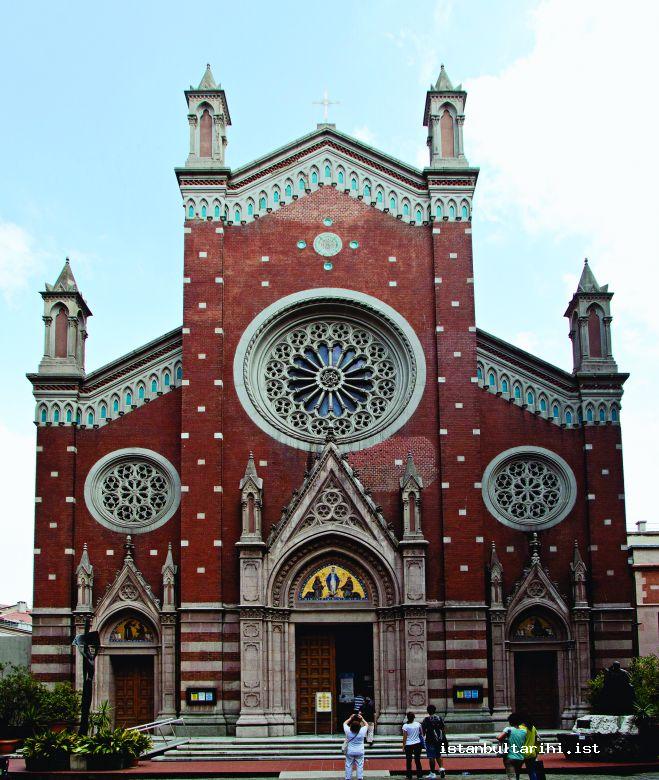
Even though Constantinople was the center of Orthodox Christianity, there have been adherents of other Christian denominations in this city throughout history. One of them was the Latin Catholic community. The oldest Catholics in the city were the Latin Catholic community even though there were the Armenian Catholics, the Assyrian Catholics, and the Chaldeans who used to be Nestorians but then adhered to Rome and adopted Catholicism as a result of Catholic missionary activities. The Latin Catholics were also called Levantines, which refers to the Europeans who live in the East or those who come from Mediterranean lands east of Italy. This label originated from a French term Levant.
The word “Levantine” (easterner) refers to all eastern ports of Mediterranean, and in a way to all people living in Eastern Mediterranean. However, during the Byzantine and the Ottoman period it was mostly used about the people originally from western Mediterranean lands such as the Italians, the Catalans, and the French rather than the local residents. In the eighteenth and nineteenth centuries, it became a term including the foreigners who came and settled in the city from Central and Northern Europe.6
Latin community consisted of two sub-groups namely Foreigners or Levantine and the Ottoman Latin community. Most Latins were Genoese. Those who submitted themselves to the authority of Sultan Mehmed II by submitting to him the key of Galata after the conquest of Istanbul in 1453 were included among the Ottoman subjects. They were Ottoman Latins who constituted the Ottoman Latin community, one of the minority groups of the Empire.
On the other hand, those Latins who sought refuge in other countries after the conquest and returned to Istanbul after the dust settled down maintained their foreign identity. These constituted the Foreign Latins or Levantines who were subject to capitulations. In other words, there were two legally separate elements constituting the Istanbul Latin community.7 The common point between these two elements was their adherence to the Roman Catholic Church.
The basis of the Istanbul Levantine community was the Italian colonies that had been established in the city during the Byzantine period due to commercial reasons. After the tenth century, Genoese and others began to swarm into the city. In addition to them, the Spaniards, the Germans, and the Provencal also came to the city. The Levantines started to settle down in the city for the first time in 991 as a result of some commercial privileges that they attained from the Byzantine Empire. They primarily settled down in the areas around Bahçekapı, Eminönü, Fener and Galata (the region where Pera-Venetian and Genoese colonies lived).8
Emperor Alexios I Komnenos granting a district of Istanbul to Venetians as a privilege in 1082 became the Italian colonies’ establishment agreement. We can list Amalfians, Venetians, and Genoese as the Italian colonies in Constantinople. The Amalfians were the oldest known Italian merchant family in Constantinople. They had one monastery and at least two churches in the city. Alexios I Komnenos had given certain privileges to Venetians and the emperors from the Komnenos dynasty renewed those privileges. The Venetians had at least four churches in the city.
The Venetians settling down in the city took place with an agreement signed in 1155. The Venetians who received more privileges were in time settled down in Galata. During this process, the Franciscan and the Dominican orders and the Knights Templar settled down in the city.
Alexios I had granted some privileges to the people of Pisa who had two churches in the city. The Crusader army that came to the city as part of the fourth Crusade ransacked the city in 1204 and founded the Latin Empire of the East. The Latin Empire of the East that continued until 1261 had several churches in the city. One of them was San Paolo e San Domenico, which continues to exist today as the Arab Mosque.
After the city was recaptured by the Byzantines in 1261, Boniface VIII decided that the patriarch of Latin community in Constantinople was to be appointed by the Pope. In this way, popes continued to appoint the patriarchs to the Latin Patriarchate in Constantinople. After Galata was left to the Genoese in 1267, it turned into a place where the religious, commercial, and cultural activities of the Levantine community increasingly became concentrated. The primary churches of the Levantine community were Santa Anna and San Antonio. In addition, there were the Santa Caterina Monastery, the Santa Chiara Monastery and Church as well as the San Francesco XVI Monastery and Church.
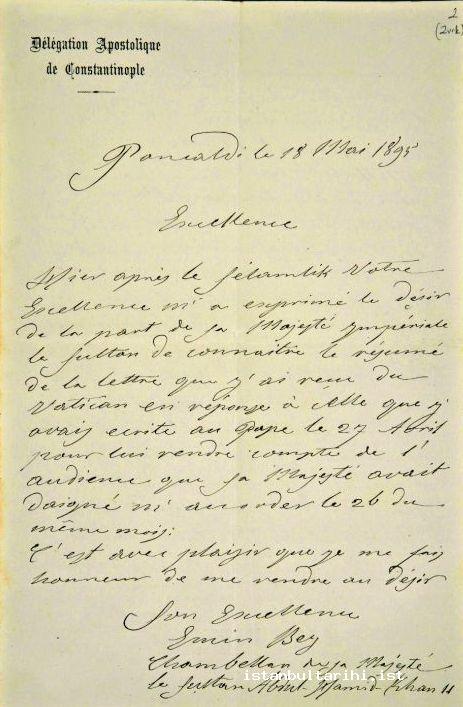
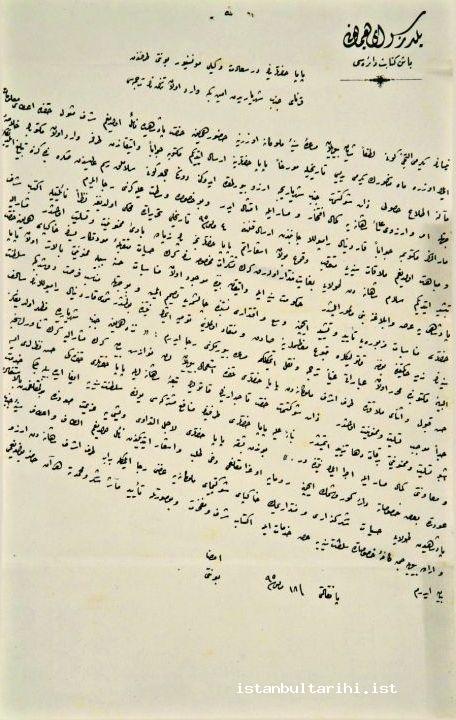
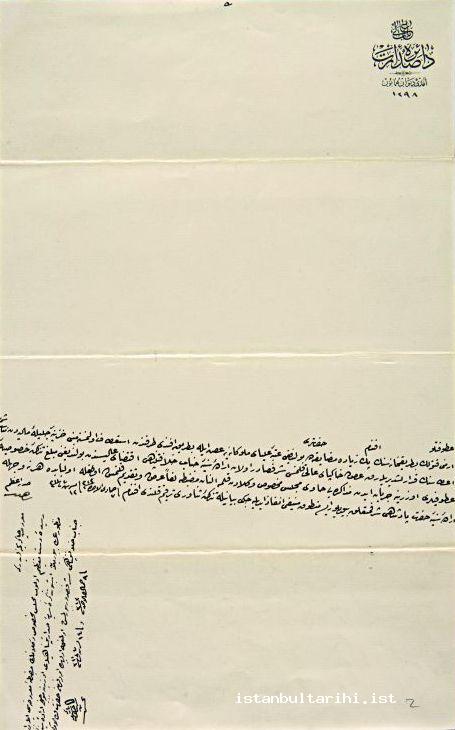
The Benedictines who had had some institutions in Constantinople before the Crusaders’ invasion retreated to the Genoese region in Galata after the Byzantines recaptured the city. The Jesuits who first came to city in 1583 captured the Saint Benoit Monastery and turned into an active missionary center against those who were not Catholic.
Saint Benoit Monastery was given to the Lazarites (Congregation of the Mission) in 1780. The Church of Saint Georges (San Giorgio/Sankt Georg) located on a hill at the center of the Galata district had been the central Church of the Venetians as long as they had control over Galata. From the end of the Venetian period until 1620, it remained under the administration of the Dominicans. Later it was inhabited by the Franciscans and after the Franciscans, the Order of the Capuchin Friars Minor settled in there in 1626. The Saint Georges Church, which was occupied by the Austrian Lazarites in 1882, belongs today to the Catholic Austrians living in Istanbul.9
The Levantine or Latin community of Byzantine Empire was restructured after the conquest. The Latin community that had been formed from different nations until that time was reorganized around the Ottoman Latins or foreign Latins called Levantines. The Latins who were Ottoman subjects were the ones who stayed in the Genoese District Galata when it submitted to Sultan Mehmed II. The others who were foreign subjects fled from the country and then came back later.
With an imperial edict dated June 1, 1453, the Venetians were given certain rights. This imperial edict constituted the legal basis of the religious freedom of the Latin community until 1923. It was also the document for the birth of the Ottoman Latin community. As a reward for their submission to Sultan Mehmed II, the Genoese received many privileges. However, in return they lost their foreign identity and started to pay tribute as all other subjects of the Ottoman Empire. According to this new legal status, Ottoman Latins lost all the advantages of the capitulations that were later given to the foreigners. Sultan Mehmed II’s imperial edict was endorsed by the following sultans and the issues stated in it were also confirmed by 1856 Reforms Edict.10
The Non-Muslim citizens of Ottomans were organized as religious communities recognized by the Sublime Porte. Every religious community had the right to choose its spiritual leader who would represent them in the presence of the state. Their choice was approved by the state and a permission for the leader of the religious community to start his task was confirmed by an imperial warrant. This practice which was called “the millet (nation) system” was not applicable to the Ottoman Latin community which adhered to an authority (papacy) outside the Ottoman Empire.
Even though the Ottoman Latin community had the same characteristics as the other minority groups, it was not accepted as a millet (nation) because it was not big enough to be given the status of a millet. This is also because they were spiritually affiliated with an authority (papacy) outside the borders of Ottoman Empire, thus, the Ottoman Latin community could not demand the status of a millet given to the other minority groups (Orthodox, Armenians, Jews). All non-Muslim citizens of Ottomans were subjected to the jizya (capitation) tax. In return, their lives and properties were under protection.
In place of the old municipal organization which was disrupted by the conquest, the bourgeois of the Galata colony established a unity. The unity that had both religious and legal characteristics was called “Magnifica Comunita di Pera” or “the Order of Santa Anna.” In the imperial edict dated 1616, it was stated that the Galata colony was allowed to choose anybody they wished to lead them in their affairs. The person who was elected by the colony would later be recognized by the Sublime Porte and gain the title vicegerent. The unity had bi-dimensional functions, i.e. both legal and religious functions. In addition to assuming the duties of ambassadorship, it also administered the financial affairs of the churches and religious institutions. The unity was mediated between the Sublime Porte and the agents of the Pope. After 1682, the duty of the unity was limited to ensure the connection of Latin subjects and religious institutions with the Sublime Porte.11
In order to benefit from the capitulations and not to pay tribute, some of the Ottoman Latins, especially dragomans (translators), would take refuge under the protection of a state that signed an agreement with the Sublime Porte or sent an ambassador to Istanbul. This group of Ottoman Latins was called “beratlılar (warranted ones).”
According to the records dating back to the one hundred years after the conquest, there were 3650 Latin in Istanbul. In the sixteenth century, 44 % of the Latin community were the subjects of Ottoman Empire. As years passed, the ratio of Ottoman Latin community to the total population dropped. However, as a result of the floods of foreign Latins or Levantines after the 1839 modernization activities, this ratio slowly increased. The Ottoman Latin community’s churches Santa Maria Draperis, Saint Antoine and Santi Pietro e Paulo (Saint Pierre) were among their important places of worship.
The community of foreign Latins or Levantines was re-established right after the conquest. According to the capitulations signed between Sultan Suleyman I and Francis I in 1535, the permission for residence given to the French living on the Ottoman lands was extended. This can be accepted as the first step of the rebirth of the foreign Latin community. This regulation later included the Pope, the king of Great Britain, and the king of Scotland. This agreement also became a basis for the capitulations given to the Venetians, the British, and the Dutch.
The old freed prisoners who preferred staying in the Ottoman Empire after gaining their freedom; returning Latins who had taken asylum in the Aegean islands, especially Chios, in 1453; the Latins who came from the Aegean islands in the 18th and 19th centuries; and those who changed their Ottoman citizenship with foreign nationality were all added as Europeans who were in Istanbul during the conquest. Immigrants coming from Aegean islands could establish relationship with Greek families more easily because of the places they were coming from. This close relationship constituted the basis for the Levantine Greek, which was the common language of the Latin community. The freed prisoners (Azatlılar) played especially an important role in the emergence of the foreign Latin community.
Capitulations that warranted the individual, religious and commercial freedoms used to encourage the foreigners to settle in the Ottoman lands. The houses of the foreigners were also under security and they were not usually included to be under the Ottoman legal system. France was the first country that benefited from such capitulations. Later, countries such as Great Britain, Germany, Austria-Hungary, Italy (Venetian Republic, the Kingdom of Napoli, Grand Duchy of Tuscany, the Kingdom of Sardinia, and the two kingdoms of Sicily) also signed privilege agreements with the Sublime Porte. In this way, foreigners maintained their foreign nationalities, laws, and habits. They were under the rule of their own consulates and almost completely outside the authority of the Ottoman judges (qadis). By means of all these advantages, small merchant groups were able to turn into real colonies.
Thanks to the 1535 capitulations, France attained many privileges such as liberty of travel and trade, and religious freedom. The French were free to perform their worship anywhere around the Ottoman Empire.
The time from the middle of the nineteenth century to the beginning of the twentieth century was the golden age of the Istanbul Latin community. With the declaration of Gülhane Hatt-i Hümayunu (the Edict of Gülhane) in 1839, the golden age of the Istanbul Latin community began. As a result of it, the migrations sped up and immigrants from new countries started to come. With the 1856 Reform Edict, the previous reforms were confirmed as well as new measures were taken to put the reforms into practice. With a new code enacted in 1867, the right to appropriate property was given to the foreigners.
The only function of 1856 Reform Edict was to confirm the reforms of 1839 and increase the privileges given to non-Muslim subjects. In the second article of Reform Edict, the religious freedom and freedom of worship given to Christian and other non-Muslim communities were confirmed; in its third article, it was stated that the property and possessions of Christian clergy were absolutely inviolable; in its fifth article, it was expressed that every community were allowed to build and restore their churches, hospitals, schools, and cemeteries; in its seventh article, it was stated that freedom of worship should be given to all communities no matter what the number of their adherents.
The increase in the number of religious institutions such as churches, monasteries, schools, hospitals, dispensaries, and orphanages is a proof that the Latin community and therefore the foreign or the Levantine community lived its golden age at the end of the nineteenth century. One of the tangible signs of the Istanbul Latin community was the emergence of a new district called Pangaltı. This district which was established as a result of the arrival of foreigners in masses was named after Giovanni Battista Pancaldi, who was an immigrant of Bologna.12
With the Treaty of Lausanne (July 24, 1923), the privileges of the Levantine community were restricted and the collapse of the community began. The Ottoman Empire revoked the capitulations on September 9, 1914, but their complete abolishment took place in Lausanne. By abolishing the capitulations, the Treaty of Lausanne took away the foreigners’ advantages that led them to settle down in Turkey.13
Chaldeans
Chaldean is the name given by the Papacy after 1553 to the Nestorians who left Nestorianism and accepted Catholicism. The Nestorians and the Chaldeans were groups who came from the same race, but adhered to different denominations. The real development of Chaldeanism took place at the end of the seventeenth and beginning of the eighteenth century. By the year 1854, the patriarchate of Chaldeans was in Babylonia. Throughout the nineteenth century, Chaldeans had certain problems among themselves and in their relations with Rome. Today, about 1000 Chaldeans live in Istanbul and have their own leader and church.14
BIBLIOGRAPHY
Albayrak, Kadir, Keldaniler ve Nasturiler, Ankara: Vadi Yayınları, 1997.
Çelik, Mehmet, Fener Patrikhanesinin Ökümeniklik İddiasının Tarihi Seyri (325-1453), Izmir: Akademi Kitabevi, 2000.
Demirkent, Işın, “İstanbul”, DIA, XXIII, 205-206.
Downey, G., “Constantinople (Byzantium, Istanbul)”, New Catholic Encyclopedia, IV, 185-190.
Higgins, M.J. (ed.), “Ecumenical Patriarchate of Constantinople”, New Catholic Encyclopedia, X, 946.
Marmara, Rinaldo, Bizans imparatorluğu’ndan Günümüze İstanbul Latin Cemaati ve Kilisesi, tr. Saadet Özen, Istanbul: Kitap Yayınevi, 2006.
Mcgrath, J.J. (ed.), “Patriarchate”, New Catholic Encyclopedia, X, 945.
Oban (Çakıcıoğlu), Raziye, “Levanten Kavramı ve Levantenler Üzerine Bir İnceleme”, Türkiyat Araştırmaları Dergisi, 2007, no. 22, pp. 337-356.
Ortaylı, İlber, “Levantenler”, DBİst.A, V, 204-207.
Şahin, M. Süreyya, “Fener Rum Ortodoks Patrikhanesi”, DİA, XII, 342.
FOOTNOTES
1 Demirkent, “İstanbul”, XXIII, 205-206.
2 Downey, “Constantinople (Byzantium, Istanbul)”, IV, 185.
3 Çelik, Fener Patrikhanesinin Ökümeniklik İddiasının Tarihi Seyri, pp. 24-25; Mcgrath (ed.), “Patriarchate”, X, 945.
4 Şahin, “Fener Rum Ortodoks Patrikhânesi”, XII, 342.
5 Higgins (ed.), “Ecumenical Patriarchate of Constantinople”, X, 946.
6 Ortaylı, “Levantenler”, V, 204.
7 Marmara, İstanbul Latin Cemaati, p. 7.
8 Ortaylı, “Levantenler”, V, 204-207; Oban (Çakıcıoğlu), “Levanten Kavramı ve Levantenler Üzerine Bir İnceleme”, pp. 337-356.
9 Marmara, İstanbul Latin Cemaati, p. 43.
10 Marmara, İstanbul Latin Cemaati, pp. 48-51.
11 Marmara, İstanbul Latin Cemaati, p. 54.
12 Marmara, İstanbul Latin Cemaati, pp. 58-122.
13 Marmara, İstanbul Latin Cemaati (The structure of this chapter is essentially based on this book and it has been widely benefited in writing this article).
14 Albayrak, Keldaniler ve Nasturiler, p. 136.
